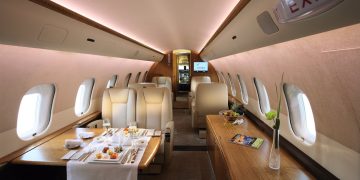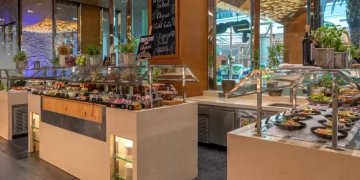“Contrary to its image of being a soulless city of vast air-conditioned malls, Singapore has become a rambunctious and increasingly sophisticated place. It is building a magnificent arts centre on Marina Bay. Its rich multi-cultural mix is an asset too. … We are benchmarking Singapore against the best cities in the world. We will study the distinctive features of world-class cities and adapt them for Singapore.”
Indeed, in the intervening decades since 1998 when then-Prime Minister Goh expressed the ambition of developing a “world-class city”, Singapore has established itself as one of Asia’s crown jewels, enriching the continent equally in capital and culture. Situated at the tip of the Malaya Peninsula, the island nation has long been a top travel destination. More recently, it has garnered international attention for reasons beyond its botanical gardens, glittering night markets and scintillating island resorts. Its newly minted status as a popular Asian art hub, as evidenced by the influx of well-heeled Chinese and Indonesian expatriates, has attracted the notice of international artists and collectors alike.
Modern and Contemporary Auction (28 August) marks the return of Sotheby’s live auctions to Singapore after a hiatus of fifteen years – a nod to the city as an art capital in the region and the auction house’s commitment to an active presence throughout Asia. Alongside such artists as Lê Phổ, Hendra Gunawan, and Fernando Amorsolo, the sale will feature works by Chu Teh-Chun, Zao Wou-Ki, Rafa Macarrón, and Walter Spies, which underscores a change from the notional categories of ‘East’ and ‘West’. Reflecting a heterogeneity of artistic expression, Singapore’s art landscape is thriving like never before, drawing the best from everywhere, while remaining true to its roots. In advance of the momentous auction for Sotheby’s Asia, we take a look at how the art world has alighted upon Singapore as a centre not only for Southeast Asia, but also for modern and contemporary art around the world.
The emergence of Singapore in the global art firmament has been several decades in the making. In the 1990s, the government set its sights on elevating the city-state as a dominant contributor to the international art scene, and ever since, the National Arts Council (NAC) has provided sizeable funding to support arts and culture. Yet, it was only in 2000 that the government cemented its intent, in the way of the successful Renaissance City Plan, a public funding démarche to position Singapore as a global arts city in the manner of London or New York.
These decades-old initiatives have received renewed impetus in recent years. In 2018-9, the NAC disbursed more than S$68 million (US$51 million) in endowments, grants and scholarships. Not only has the swell of public money served to support artists, but it has also funded a constellation of initiatives and arts shows around the city-state. During this period, there have been many new launches: the Singapore Biennale debuted in 2006, a School of the Arts was established in 2008, the Singapore Art Week commenced in 2013, and the National Gallery was inaugurated in 2015. In addition, the annual attendance at paid arts exhibitions and shows rose to 1.9 million from 750,000 in the decades between 2015 and 1996. By the same token, the contribution by the arts and culture sector to the Singaporean economy tripled to S$1.7 billion, per NAC data.
Singapore has become an epicentre of cosmopolitan taste in the region and for the international art market, attracting stars from beyond its shores. “When we talk about Asia, artists from China, Japan, and Korea are more dominant, but it’s important to understand that the world of contemporary art does not stop there,” observed Emi Eu, project director of S.E.A. Focus, a platform for Southeast Asian contemporary art.
While the discussion often focuses on the artists around the world flocking to Singapore, it’s important to point out that the influences are not unidirectional. To illustrate the point, one may think back on the hub’s traditions of past art movements, such as the Nanyang style of the 20th century. Key figures of the Nanyang art movement, such as Georgette Chen, drew upon foundations of modern art from China and France and established a distinctive local style and identity in Singapore.
The country’s art ecosystem has been propelled by its foreign investment policies, high per capita gross domestic product and flourishing free market economy. Magnus Renfrew, co-founder of ART SG, said, “Singapore is increasingly the destination of choice for global companies to be their base of pan-Asia operations. This is particularly evident within the tech sector with major western companies basing themselves there. It is also the location of choice outside of China for major Chinese tech companies.” For similar reasons, many family offices have turned to the city-state in recent years to set up their bases or satellite offices for investments in the region.
Singapore has been the chosen location for major blockbuster exhibitions, including Yayoi Kusama: Life is the Heart of a Rainbow in 2017 and Nam June Paik: The Future is Now in 2021, both drawing crowds to the National Gallery Singapore. Today, the city boasts more than 50 museums, including the National Gallery Singapore, which hosts over 8,000 artworks.
The exhibits in Singapore are not restricted to formal galleries. The artist KAWS created a sensation in last year in November when his massive pop-up installation KAWS:HOLIDAY made its way to Marina Bay in the city, having previously toured major art destinations around the world. From street art to graffiti, light festivals to larger-than-life public installations; in community parks and commercial centres, and even your local walking trail – art comes in all shapes and sizes. Here in Singapore, the artist made waves with the launch of his KAWS x Sesame Street merchandise with Japanese retailer Uniqlo, which drew snaking queues along Orchard Road.
There are monuments that doff their hat to the city’s colonial past. The Arts House, a multi-disciplinary arts venue built in 1827 that once housed the country’s parliament, is a case in point. Today, its beautifully restored bones shine through the concerts and exhibits it hosts. And its old cabinet room partially backdrops British-Nigerian artist Yinka Shonibare’s ‘Justice For All’ installation. This is a microcosm of Singapore’s colonial-era, art-defining architecture. As you weave your way through the city, there are many more examples: Gillman Barracks, a British military camp established in 1936, is now a noted art venue, restored in 2012 as part of Singapore’s Contemporary Art Enclave. Likewise, Twenty Twenty, a pop-up art destination for mainly female artists, enjoyed a past life as a ship-repair factory.
The Singapore art market appears to be on the upswing, but there are no certainties especially in our current fast-paced climate. That is why many continue to follow the development of this art ecosystem with great interest. “For a visibly impactful change in the arts, Singapore needs direct investments from committed, homegrown, corporate entities, and visionary individuals who are genuinely passionate, care for long-term cultural development, and are mature enough to facilitate a diversity of perspectives,” Khairuddin Hori, Singapore-based curator, said in 2022.
While the homegrown art scene might still be seen as emergent, some note the aspects of the community that foster up-and-coming talent. Singapore-based Gajah Gallery Founder Jasdeep Sandhu said in 2019, “Singapore has never been known as a city that produces artists but [the government] started building infrastructure and improving art schools almost 30 years ago. You now have a very sustainable art community where young artists can actually survive.”
“I’ve been seeing a number of experienced collectors moving to Singapore lately and know of a few more who are considering a move here for the long term, with plans to move their entire art collection with them too,” Liu notes.
As the overlap between east and west becomes increasingly blurred, one thing is certain: Singapore’s art landscape is thriving like never before, incorporating the best elements from all over the world, while remaining true to its own roots.
















































